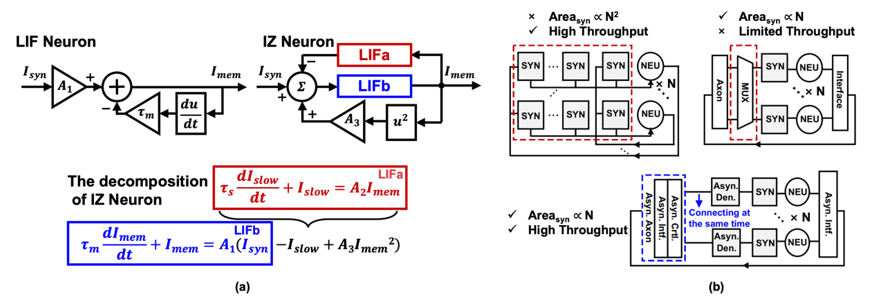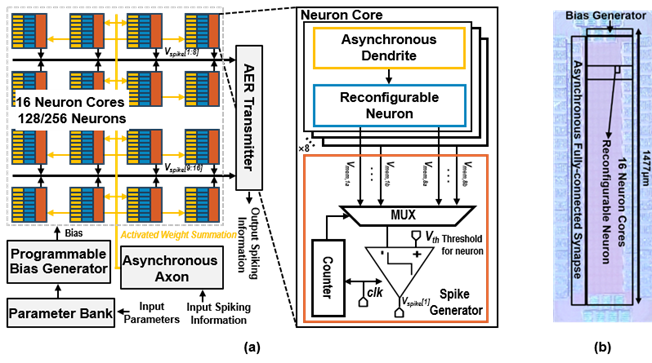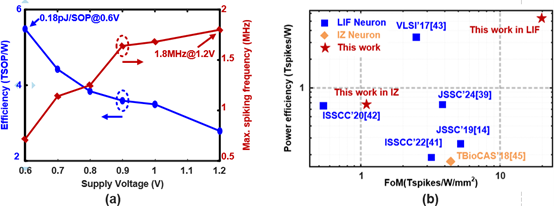- Home
- About Us
- Students
- Academics
-
Faculty
- Electrical Engineering
- Automation
- Computer Science & Engineering
- Electronic Engineering
- Instrument Science and Engineering
- Micro-Nano Electronics
- School of Software
- Academy of Information Technology and Electrical Engineering
- School of Cyber Security
- Electrical and Electronic Experimental Teaching Center
- Center for Advanced Electronic Materials and Devices
- Cooperative Medianet Innovation Center
- Alumni
-
Positions
-
Forum
News
- · Bin Dai's Team Unveils the Assembly Mechanism of β-Lactoglobulin Fibrils, Providing New Insights for the Development of Functional Nanomaterials
- · Mingyi Chen’s research group has made important progress in the field of analog-to-digital converter chips for brain-computer interface
- · Progress in the Development of Semiconductor Nanomaterials to Activate Pyroptosis for Cancer Therapy
- · Jiamiao Yang’s team achieved the high precision optoelectronic reservoir computing based on complex-value encoding
- · Significant Advancements in Resonator-Enhanced Quantum Sensing Achieved by Zenguihua's Team at the School of Sensing Science and Engineering
Shanghai Jiao Tong University professors Lian Yong and Wang Guoxing's team have made remarkable progress in the field of high-efficiency pulse neural network accelerator chips.
Recently, the Bio-Circuits and Systems Laboratory, led by Professors Lian Yong and Wang Guoxing from the Department of Micro-Nano Electronics (School of Integrated Circuits) at the School of Electronic Information and Electrical Engineering, has made significant progress in the field of high-efficiency pulse neural network accelerator chips. The related results were published under the title "A 0.67-to-5.4 TSOPs/W Spiking Neural Network Accelerator With 128/256 Reconfigurable Neurons and Asynchronous Fully Connected Synapses" in the internationally renowned journal, IEEE Journal of Solid-State Circuits (JSSC).
The first author of the paper is Qi Xiang'ao, a doctoral student in the Department of Micro-Nano Electronics at the School of Electronic Information and Electrical Engineering, and the corresponding author is his advisor, Associate Professor Zhao Jian.
Paper link: https://ieeexplore.ieee.org/document/10546323
Research Methodology:
Spiking Neural Network (SNN) accelerators have garnered widespread attention due to their high computational efficiency. However, the varying requirements for neuron models across different use cases and the uneven spike distribution resulting from event-driven operations complicate the optimization of throughput and area for SNN chips, thereby limiting the improvement of chip efficiency.

Figure 1. Two innovative technologies in the Spiking Neural Network Accelerator Chip: (a) Reconfigurable Neuron Technology (b) Asynchronous Fully-Connected Synapse Technology
To address the aforementioned issues, the research team developed an SNN chip with 128/256 reconfigurable neurons and asynchronous fully-connected synapses. On one hand, the reconfigurable neuron technology allows the artificial neuron circuits to switch seamlessly between the LIF model and the IZ model according to actual application needs, thereby extending the efficiency advantages of the accelerator to more application scenarios (Figure 1a). On the other hand, the subthreshold asynchronous fully-connected synapses (Figure 1b) provide parallel full connectivity for all neurons on the chip, similar to the human brain, breaking through the bottlenecks of energy consumption and unit throughput rate of SNN accelerators. The overall architecture of the chip is shown in Figure 2a.

Figure 2. System block diagram and micrograph of the Spiking Neural Network (SNN) accelerator chip.
Results and Impact:
The research team developed the chip prototype using a 55-nm CMOS process (Figure 2b). The proposed chip achieved a peak power efficiency of 5.37 TSOPs/W and a throughput of 25.6 MSOPs/s. The combination of near-threshold neuron operation and asynchronous fully-connected synapses resulted in a 9.42-fold reduction in energy efficiency for image feature extraction applications compared to existing works. The chip also demonstrated its efficiency in various applications, including image compression encoding and the simulation of biological neuron characteristics.

Figure 3. Performance metrics of the chip obtained from testing, including energy efficiency and area efficiency.
This study introduces two technologies—lossless neuron reconfiguration and parallel fully-connected neurons—that advance SNN chips in more accurately simulating biological neurons and more efficiently supporting large-scale integration. These innovations pave the way for future applications in biological neural network simulation and high-efficiency brain-like reasoning, providing hardware support for both "studying the brain" and "utilizing the brain" endeavors.
About IEEE JSSC:
The IEEE Journal of Solid-State Circuits (JSSC), as an international flagship journal, aims to publish the latest technological advancements and record-breaking achievements in the field, representing the highest technical standards in academia and industry.
In recent years, the Department of Micro-Nano Electronics at the School of Electronic Information and Electrical Engineering, Shanghai Jiao Tong University, has been dedicated to exploring cutting-edge chip design technologies. They have made breakthroughs in various areas, including on-chip network chips, low-power analog-digital interface circuits, and high-efficiency specialized accelerators. Their findings have been successively published in JSSC.
-
Students
-
Faculty/Staff
-
Alumni
-
Vistors
-
Quick Links
